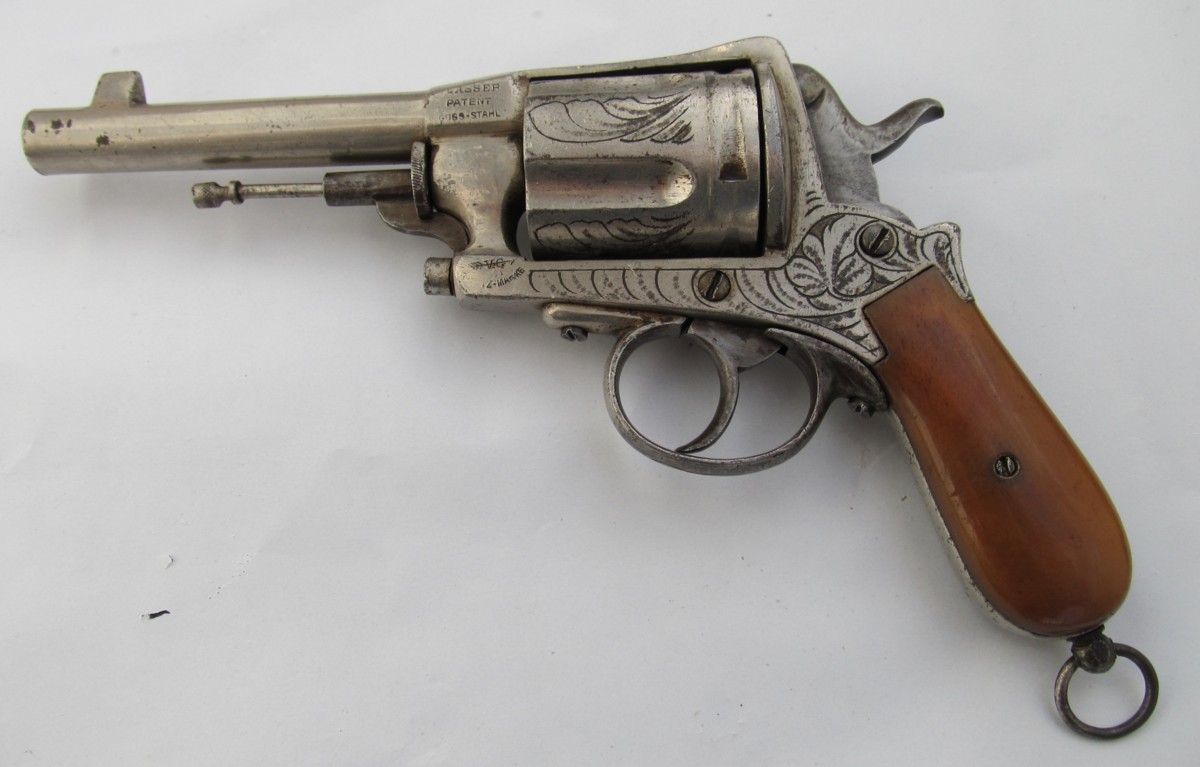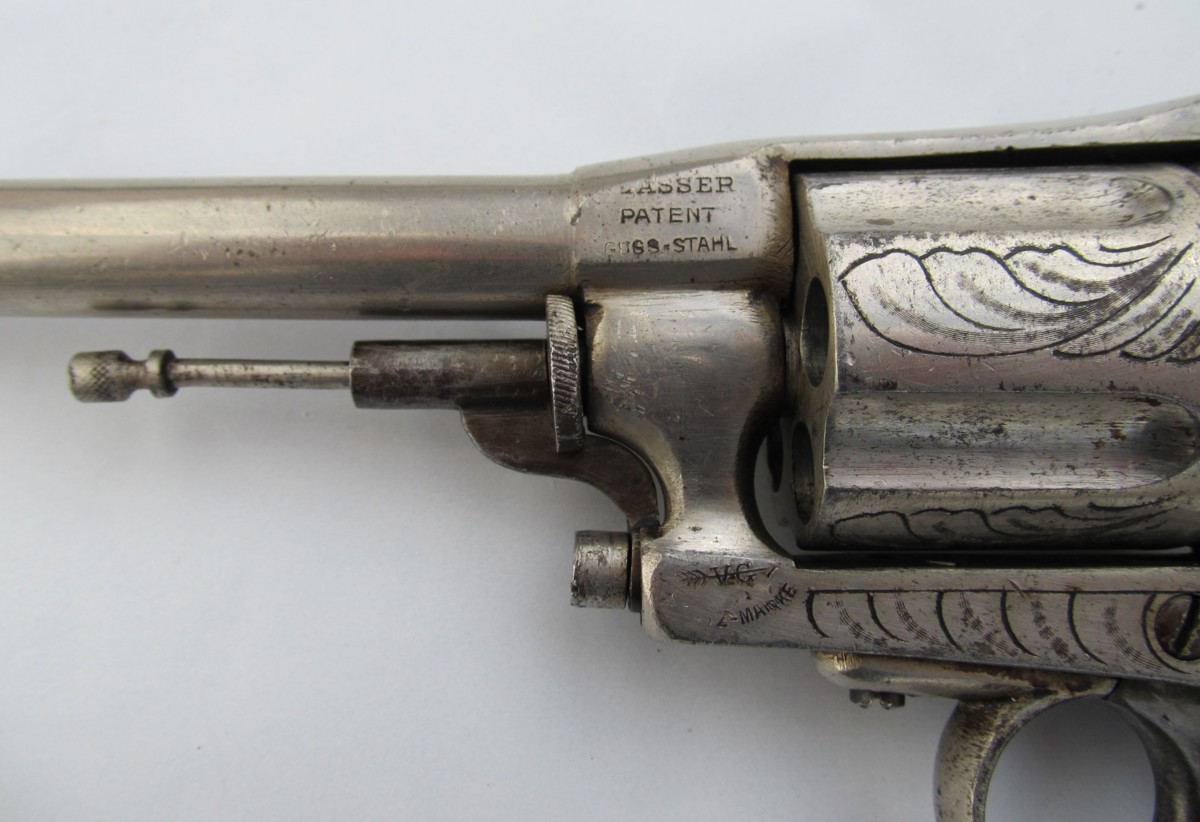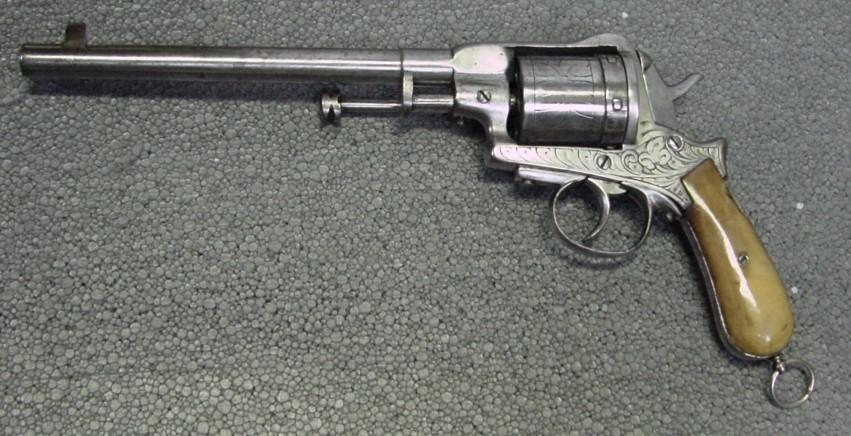GASSER
This is a
classic Gasser 1873 revolver according to many sources, well known as the
Montenegrin, manufactured in Liège after January 30, 1894. In any case, it was
from 1910 (according to several sources, but experience has taught me to be
cautious...) that King Nicholas I of Montenegro would have imposed the wearing
of such a revolver on the male population of his kingdom. There is certainly an
in-depth study to be done on this subject.
So I
wonder why the King of Montenegro had the idea – even with the theory that he
was a shareholder in Gasser – to impose in 1910 a large black-powder model 1873
revolver, when there was already a flop of live-powder pistols. Especially since
most of the so-called Montenegrin revolvers were made in Liège, and not at
Gasser’s...
Matter to
follow, perhaps, one day...
As is
often the case, even if you can read the mention Gasser Patent Guss Stahl etc.,
the Liège manufacturer took great care not to be able to be identified
quickly... so, more than a century later, it is even more difficult. You can see
the letters VC (or G) crossed by an arrow, but we did not find this mark in our
documentation. This brand resembles - from a distance - a Gasser brand, spotted
by a member of the team:

Markings
ELG on
star in crowned oval: acceptance, in use since 11 July 1893;
R
crowned: indicates that the
barrel
is
rifled
: in use
since January 30, 1894.
GP with the help of Chris.




Gasser Monténégrin
It acts of a revolver Gasser Montenegrin gauges 11.75 to six blows of them, produced in Belgium (mark ELG with ellipse and crown).
Model: copy system Gasser MOD. 1870.
Calibre: 11.75 Monténégrin.
Bench of test: Liege.
Technique:
Simple and double action.
Overall length: 380 mm
Length barrel: 240 mm
Capacity charger: barrel with six holes.
Observations:
Because of a law promulgated by the King of Montenegro, all the major males of this small state were to be armed to the teeth. In the representations of the end of eight hundreds indeed, they are seen represented with at least two large guns with the belt, a rifle and a sabre.
The guns chosen by the mass were obviously of Austrian ordinance, of the Empire of which Montenegro was a component.
The lack of potentiality of the arsenals of Steyr (Vienna) and Budapest made that the Montenegrins provided they everywhere where were similar weapons.
The gun into object was produced in Belgium to restock the customers Montenegrins.
In excellent conditions of conservation and perfectly functional calculus, old specimen of collection with historical value.
The weapon presents some repairs:
- Remainders of the rod of expulsion substituted by a part of a rifle Carcano MOD. 1891.
- The door of loading has which have added an elastic spring and an artisanal disc on the axis of rotation.
- The snap ring of the rod ofexpulsion has an additional screw.
- The nut of rotation of the drum presents a welding at the height within the competence of call.
Alberto Riccadonna

